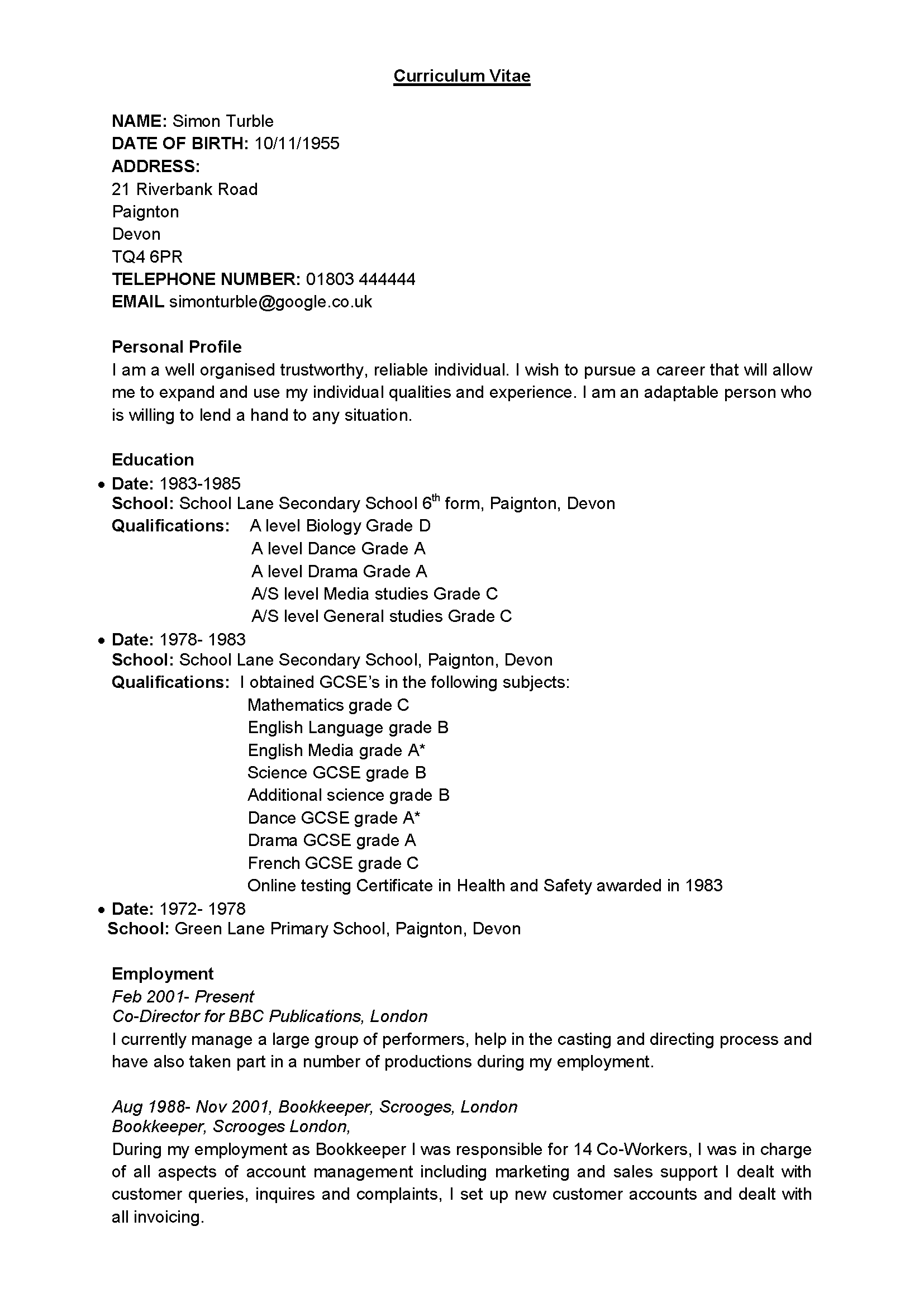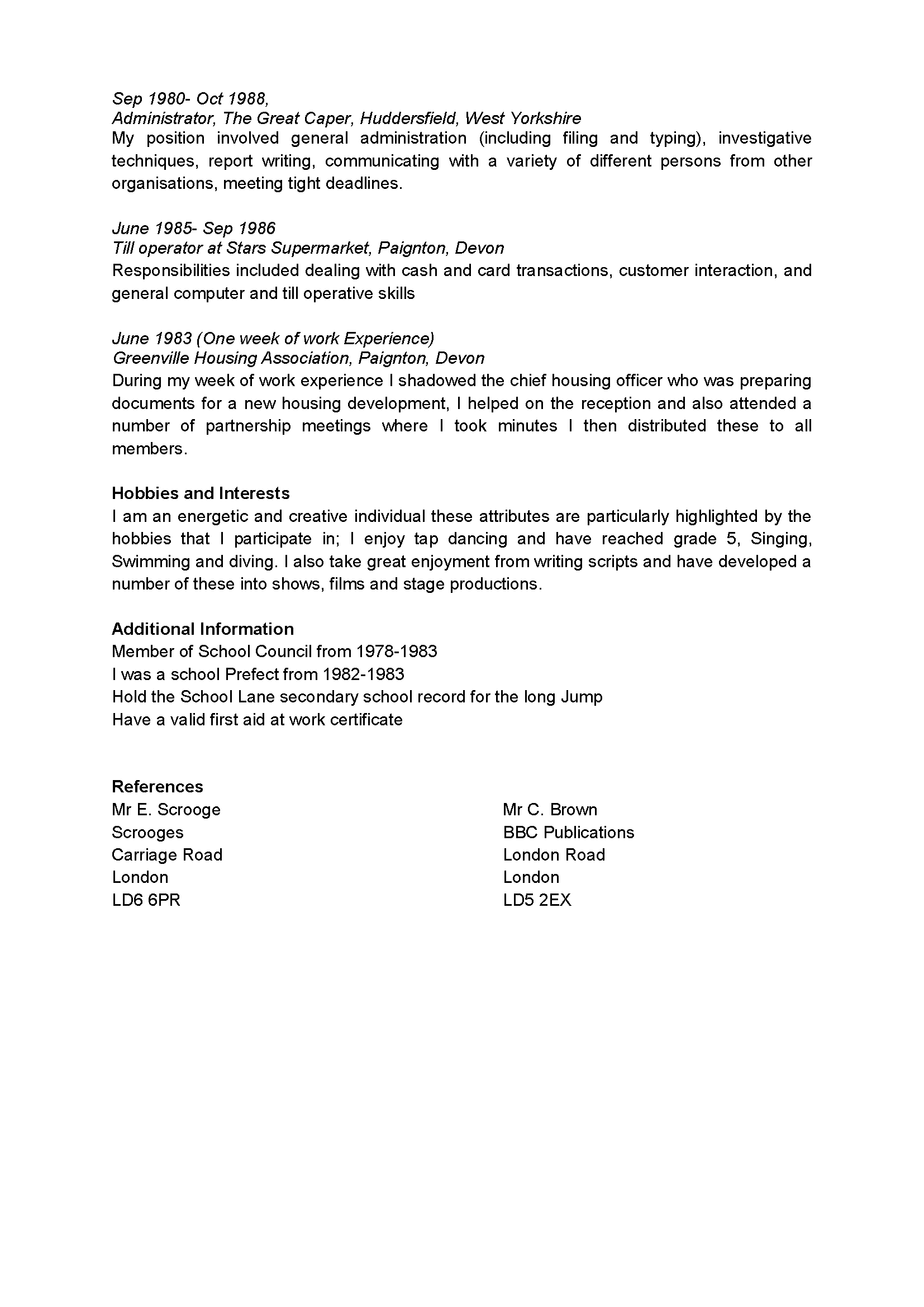Writing a CV
CVs do not get jobs but a CV can get an interview. A CV is the job seeker’s marketing document that sells the product; the skills and experience of the candidate. To be effective, a CV must grab the attention of the reader in 25-35 seconds.
- Make absolutely sure your document is error free.
- Find a balance between wordiness and lack of detail.
- Think ‘accomplishments’ rather than ‘job duties’.
- Keep it positive.
- Make sure it is easy to read with space between each section.
- It should be no more than two pages long.
What should I include?
Personal Details
Start with your personal details; your name, address and contact details.
Your Personal Profile
Underneath your personal details, put your ‘Personal Profile’ which outlines your skills and qualities. It should only be a few lines but must spark the reader’s interest.
Education
Using bullet points or a table include:
- The university, college or school you went to.
- The dates the qualifications were awarded and any grades/ predicted grades.
- Any other courses, if they are relevant.
Employment History
Start with your present or most recent job and work backwards, Include:
- Each employer
- The dates you worked for them
- The job Title
- Your main duties.
Show not only your main duties and responsibilities but give examples of the skills you used and what you achieved. Relate your skills and experience to the job description. Also include any relevant temporary or unpaid work.
Hobbies and Interests
Some employers like to read about your interests, as it can give them an idea of your strengths and what you’d be like to work alongside.
References
Finally, You should list two references: at least one referee should know you professionally.
What are the different styles of CV?
There are four main styles:
Chronological CV: the most widely used, listing work history then education in reverse order.
Functional CV: has a section near the beginning that describes skills and abilities acquired through many jobs. Often used by those who’ve had a very varied career.
Targeted CV: similar to the Functional CV, and useful for those with varied or patchy employment histories.
Alternative CV: for jobs requiring creative flair.
Examples of different CV styles can be found on the following websites.
totaljobs.com
cvspecial.co.uk
workthing.com
alec.co.uk
bradleycvs.co.uk
Please click below to download a booklet containing much more information on writing a CV:
How to write a CV Booklet


